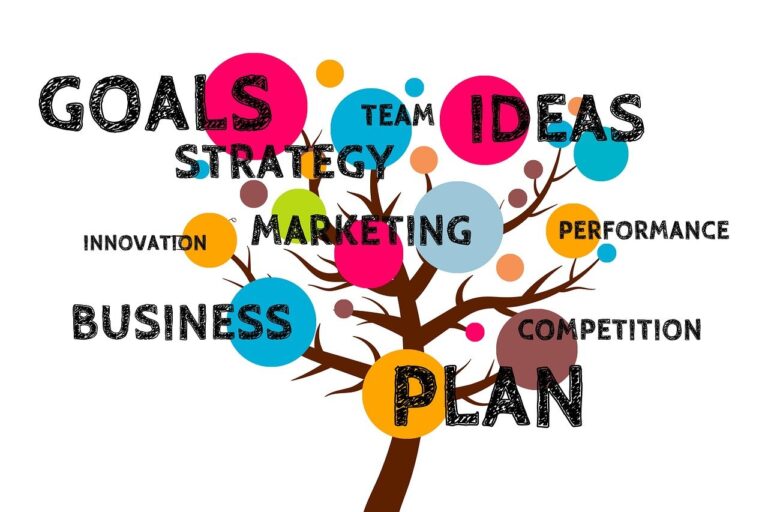How Do We Keep Our Business Continuity Plan Simple Yet Effective?
In a rapidly evolving business landscape, ensuring the continuity of your operations is crucial. However, maintaining a complex business continuity plan can often lead to confusion and inefficiencies. That’s why it’s imperative to strike a balance between simplicity and effectiveness. By streamlining your processes and focusing on key priorities, you can create a business continuity plan that is both easy to understand and highly efficient. In this article, we will explore strategies to simplify your business continuity plan while maximizing its effectiveness, ensuring your organization is well-prepared for any unexpected disruptions.
1. Understand the Purpose of a Business Continuity Plan
1.1 Importance of a Business Continuity Plan
A business continuity plan is essential for any organization, regardless of its size or industry. It is a proactive approach that helps ensure the survival and resilience of the business in the face of unexpected disruptions, such as natural disasters, cyber-attacks, or other emergencies. The importance of having a business continuity plan cannot be overstated, as it enables the organization to effectively respond and recover from potential threats, minimizing the impact on operations, reputation, and customer trust.
1.2 Components of a Business Continuity Plan
A comprehensive business continuity plan consists of various interconnected components that collectively work towards maintaining continuity of operations. These components typically include:
-
Business Impact Analysis (BIA): Assessing the potential impacts of disruptions on critical business functions and processes. It helps identify the priorities for recovery and resource allocation.
-
Risk Assessment: Analyzing potential risks and vulnerabilities that can affect the organization. This step involves identifying the likelihood and potential impact of each risk, allowing for a more targeted approach to risk mitigation.
-
Emergency Response Planning: Outlining the immediate response procedures for different types of emergencies. This includes escape routes, emergency contacts, and communication protocols to ensure the safety of employees and visitors.
-
Crisis Management Plan: Establishing a clear framework for managing crises and coordinating responses. This plan outlines the roles and responsibilities of key personnel, as well as the communication channels and decision-making processes to be followed during a crisis.
-
IT Disaster Recovery Plan: Addressing the recovery of critical IT systems in the event of a disaster or cyber-attack. This plan provides guidelines for data backup, system restoration, and alternative IT infrastructure options.
-
Communication Plan: Defining how internal and external communication will be managed during a disruption. This plan includes establishing primary communication channels, backup methods, and key contact information.
2. Conduct a Risk Assessment
2.1 Identify Potential Risks
To effectively prepare for potential disruptions, it is crucial to identify and understand the various risks that can impact your business. Start by conducting a thorough risk assessment, which involves evaluating both internal and external factors. Internal risks may include equipment failures, data breaches, or human errors, while external risks can range from natural disasters to supply chain disruptions or regulatory changes. By identifying these risks, you can prioritize your efforts and resources towards managing and mitigating the most significant threats.
2.2 Assess Impact and Probability
Once potential risks are identified, it is essential to assess their potential impact and probability. This step helps you gauge the severity of each risk and develop appropriate strategies for risk mitigation and recovery. Consider factors such as financial impact, operational disruptions, reputational damage, and legal or regulatory consequences. Assign a rating to each risk based on the likelihood of its occurrence and the magnitude of its impact. This will aid in prioritizing your response efforts and allocating resources accordingly.
3. Define Critical Functions and Prioritize Them
3.1 Determine Essential Business Activities
During a disruption, not all business functions and activities hold equal importance in terms of maintaining continuous operations. Identify and prioritize the essential business activities that are crucial for your organization’s survival and immediate recovery. These activities may include core production processes, customer support, financial transactions, or supply chain management. By focusing on these critical functions, you can allocate resources and develop targeted strategies to ensure their resilience and continuity.
3.2 Establish Priorities for Recovery
Once you have determined the essential business activities, establish priorities for their recovery in the event of a disruption. Consider factors such as the impact on customers, regulatory requirements, and dependencies on external stakeholders. Define recovery time objectives (RTOs) and recovery point objectives (RPOs) for each activity, indicating the maximum acceptable downtime and data loss. This will guide your recovery efforts and enable a more efficient allocation of resources and priorities.
4. Develop Clear and Concise Procedures
4.1 Create Step-by-Step Instructions
To ensure a smooth and effective response during a disruption, it is crucial to develop clear and concise procedures outlining the necessary steps to be taken. Create step-by-step instructions for each critical function, encompassing pre-emptive measures, immediate response actions, and subsequent recovery activities. These instructions should be comprehensive yet easy to understand, enabling employees to follow them even in high-pressure situations. Consider including checklists, decision trees, and flowcharts to support the procedural guidance.
4.2 Include Contact Information and Roles
Along with step-by-step instructions, it is essential to include contact information and roles of key personnel who will be involved in the response and recovery efforts. This ensures efficient communication and coordination during a disruption. Provide clear details of who to contact in different scenarios, such as emergency contacts, IT support, public relations, or legal advisors. Assign roles and responsibilities to specific individuals, including alternates, and include their contact information to facilitate immediate response and collaboration.
5. Keep Documentation Up-to-Date
5.1 Regularly Review and Revise Procedures
A business continuity plan is not a one-time effort but requires continuous attention and updates. Regularly review and revise the procedures to ensure their relevance and effectiveness. This includes incorporating lessons learned from previous incidents, industry best practices, and any changes in your organization’s operations or infrastructure. Consider conducting periodic reviews with key stakeholders to gather their input and foster a culture of continuous improvement.
5.2 Document Changes and Updates
As you make changes and updates to your business continuity plan, it is crucial to document them appropriately. Maintain a version control system or a change log to track modifications made to the plan over time. Clearly indicate the reasons for the changes, the date of implementation, and the individuals responsible for the revisions. This documentation not only helps maintain accountability but also ensures that all stakeholders are aware of the latest plan and can reference it when needed.
6. Train Employees on the Plan
6.1 Conduct Comprehensive Training Program
Even the most well-designed business continuity plan will be ineffective if employees are not trained on its implementation. Conduct a comprehensive training program to familiarize employees with the plan, their roles, and the specific procedures they need to follow. This training should be conducted regularly, ensuring that new employees are onboarded and existing employees receive refresher courses. Use a variety of training methods, such as workshops, simulations, or e-learning modules, to cater to different learning styles.
6.2 Test Employee Response and Competency
Training alone is not sufficient; it must be accompanied by testing to evaluate employee response and competency. Conduct drills and simulations to simulate various scenarios and assess how employees react and implement the plan in real-time situations. Evaluate their understanding of the procedures, their ability to communicate effectively, and their coordination with other team members. These tests not only identify areas for improvement but also build confidence among employees, ensuring they are prepared to handle disruptions.
7. Establish Communication Protocols
7.1 Determine Primary Communication Channels
Effective communication is vital during a disruption to ensure coordination, access to information, and timely updates. Determine the primary communication channels that will be used to disseminate information to employees, stakeholders, and customers. This may include email, phone calls, text messages, or a dedicated communication platform. Ensure these channels are reliable, accessible during emergencies, and easily scalable to accommodate increased communication needs.
7.2 Establish Backup Communication Methods
In addition to selecting primary communication channels, it is important to establish backup methods to ensure communication continuity in case of primary channel failure or limited availability. This may involve alternative communication platforms, redundant communication devices, or designated personnel responsible for physical message delivery during disruptions. By establishing backup communication methods, you minimize the risk of communication breakdowns and ensure critical information reaches the intended recipients.
8. Maintain Redundancy in Key Systems
8.1 Implement Backup Solutions
To ensure the continuity of critical business functions, it is essential to implement backup solutions for key systems and infrastructure. This includes regular data backups, redundant server configurations, and alternative power sources. Backup solutions should be tested periodically to ensure their effectiveness and reliability. Consider leveraging cloud-based technologies or off-site data centers to enhance redundancy and minimize the risk of data loss or system downtime.
8.2 Test and Monitor Redundancy
Implementing redundancy is not sufficient; it must be tested and monitored to ensure its effectiveness in a real-world scenario. Regularly test backup systems, data restoration processes, and failover capabilities to verify their functionality and identify any potential weaknesses or gaps. Continuous monitoring of key systems, such as IT infrastructure or production equipment, helps detect early warning signs of potential failures and enables proactive measures to minimize disruptions and ensure continuity.
9. Regularly Test and Evaluate the Plan
9.1 Conduct Tabletop Exercises
To assess the overall readiness and effectiveness of your business continuity plan, conduct tabletop exercises involving key personnel and stakeholders. These exercises simulate various scenarios, allowing participants to walk through the plan, identify gaps, and test decision-making processes. Encourage active participation, discussion, and evaluation of the plan’s strengths and weaknesses. Incorporate the lessons learned from these exercises into the plan’s revisions and improvement strategies.
9.2 Perform Full-Scale Drills
In addition to tabletop exercises, periodically perform full-scale drills to test the plan’s implementation under realistic conditions. These drills involve actual response actions, mobilization of resources, and coordination between different departments and external stakeholders. Simulate various scenarios, such as fire evacuations, IT system failures, or supply chain disruptions, and evaluate the plan’s effectiveness in managing these situations. Use these drills as opportunities to identify areas for improvement, strengthen coordination, and enhance overall response capabilities.
10. Continuously Improve the Business Continuity Plan
10.1 Seek Feedback and Suggestions
A business continuity plan should be a living document that evolves with time and changing circumstances. Actively seek feedback and suggestions from employees, stakeholders, and external experts to identify areas for improvement. Encourage open communication and a culture of continuous learning and improvement. Regularly review reports and feedback from post-incident reviews, customer feedback, or regulatory audits to gather insights and implement necessary updates.
10.2 Incorporate Lessons Learned
One of the most valuable sources of improvement for a business continuity plan is the lessons learned from previous incidents or disruptions. Analyze these experiences to identify recurring issues, weaknesses, or gaps in the plan’s effectiveness. Incorporate these lessons learned into the plan’s revisions to address systemic vulnerabilities and enhance response capabilities. By continuously learning from past incidents, you can refine and strengthen your business continuity plan, ultimately ensuring its simplicity and effectiveness in preserving business operations during disruptions.
In conclusion, keeping a business continuity plan simple yet effective requires a systematic approach that encompasses various components and stages. By understanding the importance of a business continuity plan, conducting a risk assessment, defining critical functions and priorities, developing clear procedures, maintaining documentation, training employees, establishing communication protocols, implementing redundancy, testing and evaluating the plan, and continuously improving it, you can create a robust and practical business continuity plan. Remember to involve key stakeholders, regularly review and update the plan, and learn from past experiences to ensure your plan is adaptive, scalable, and aligned with your organization’s specific needs.








